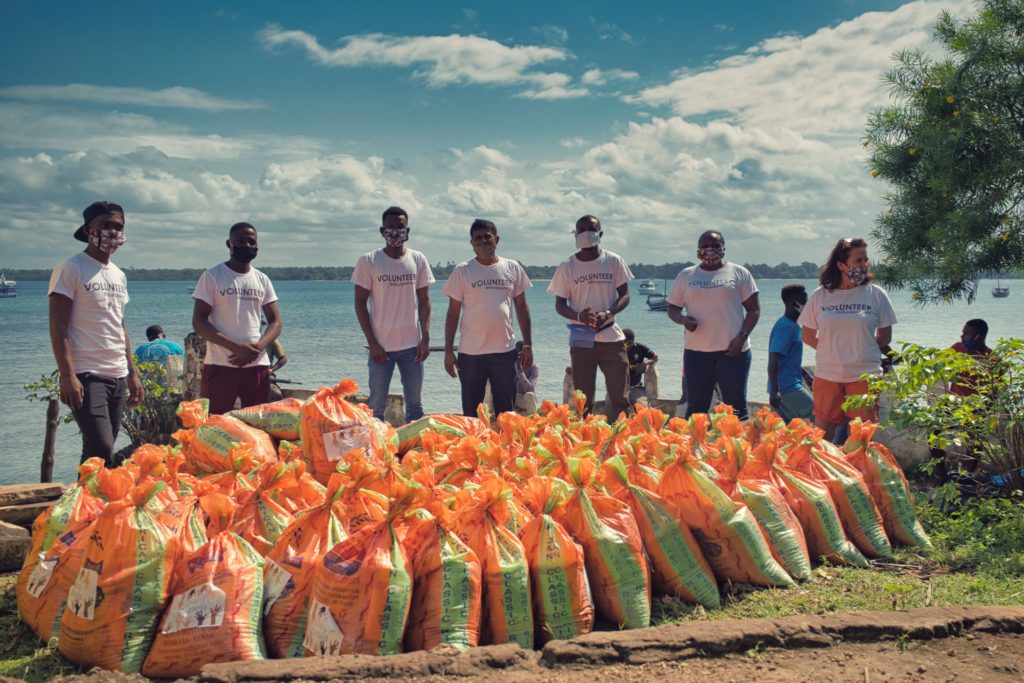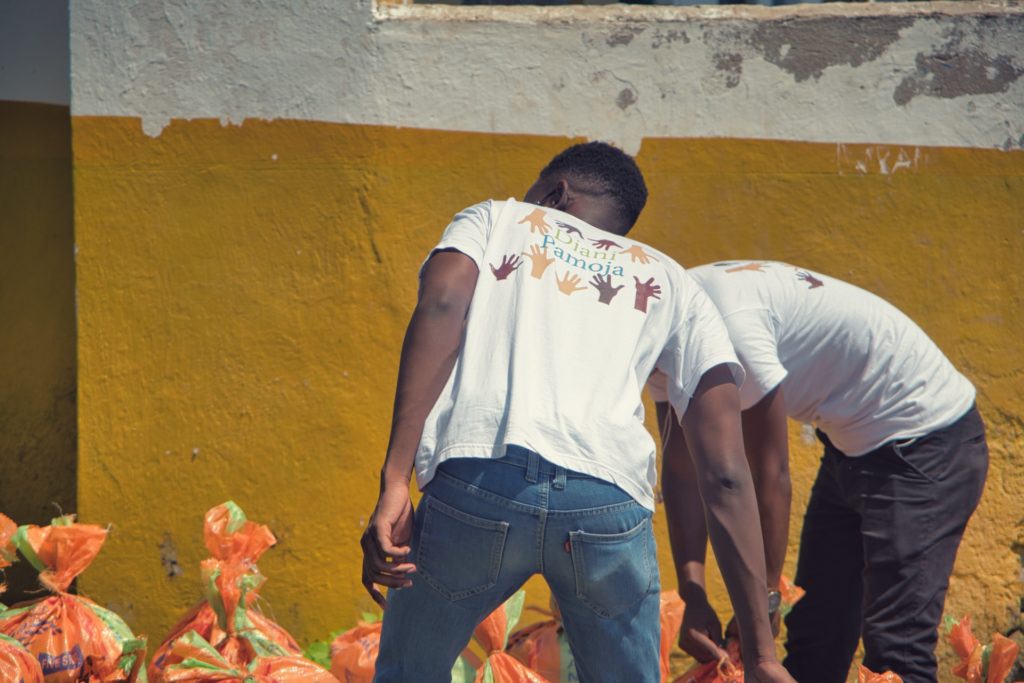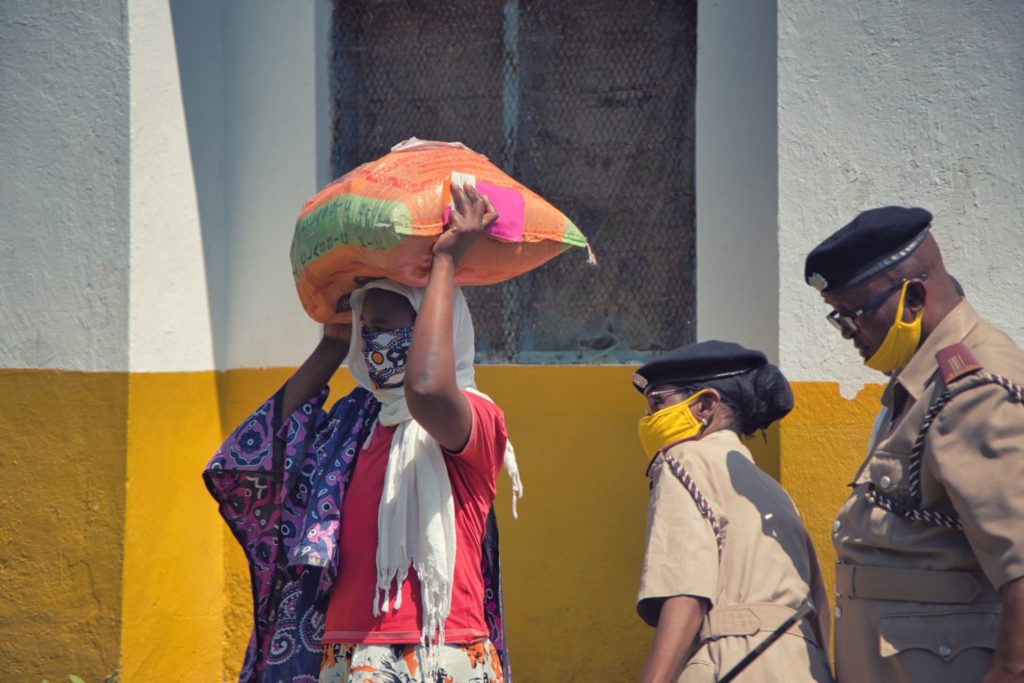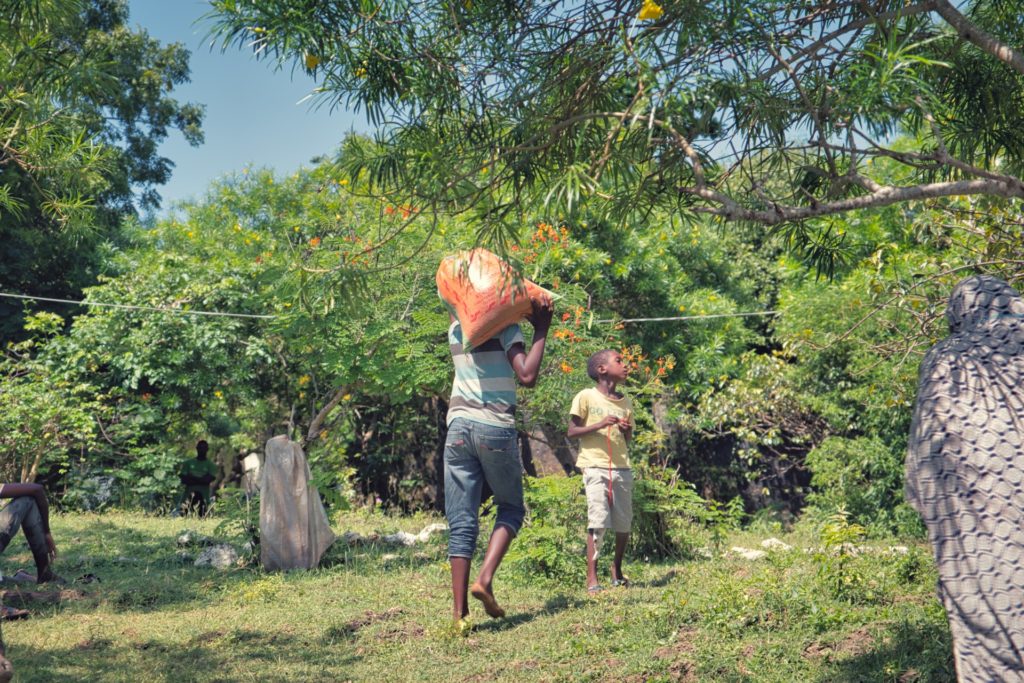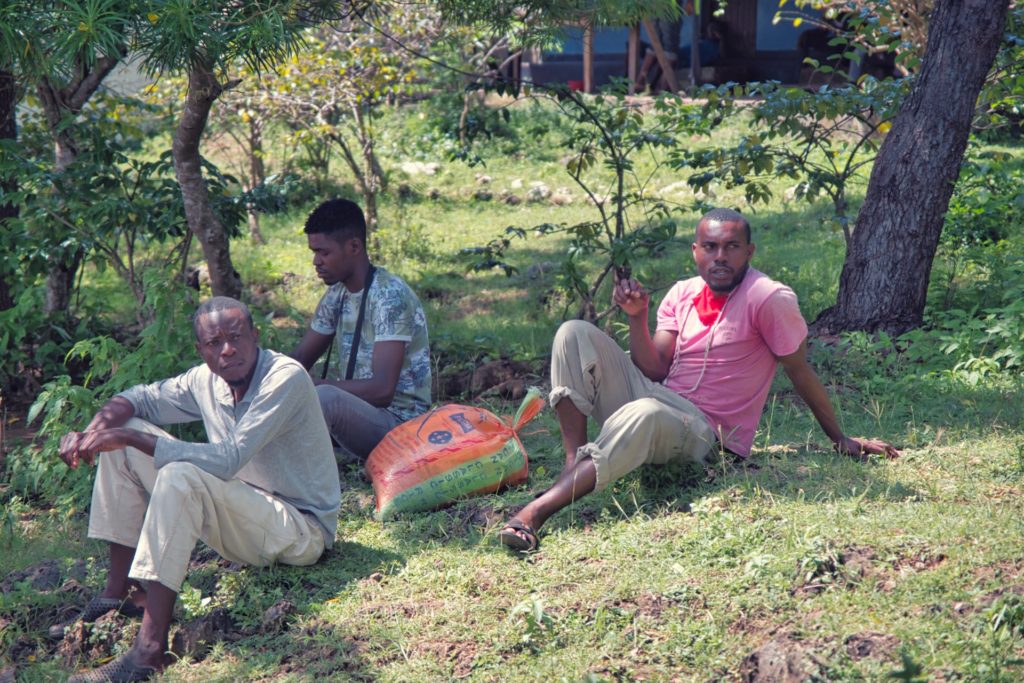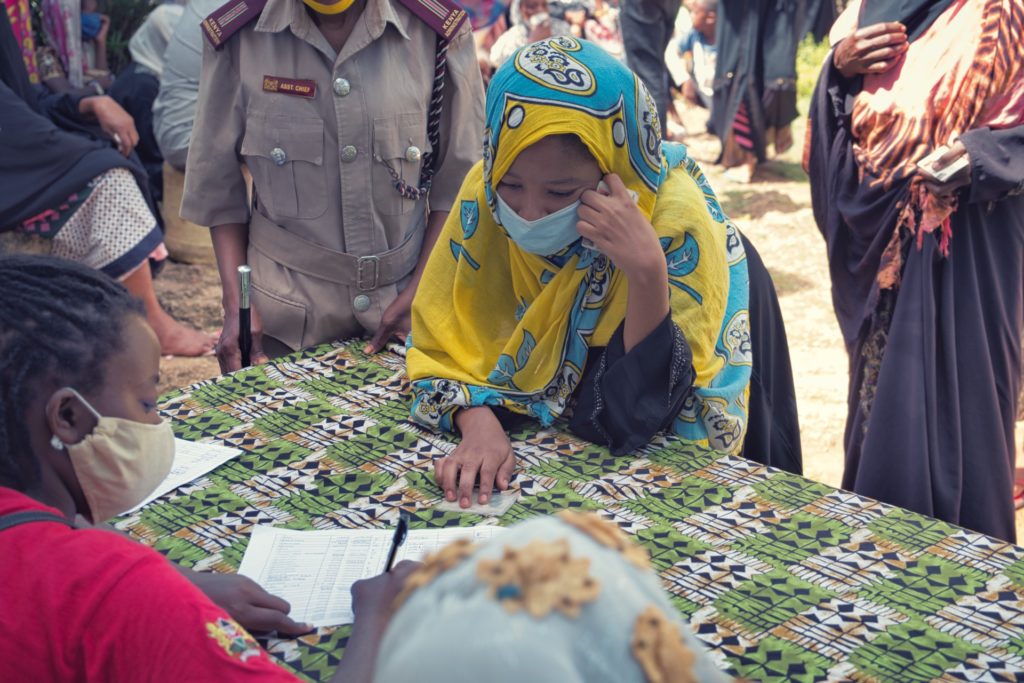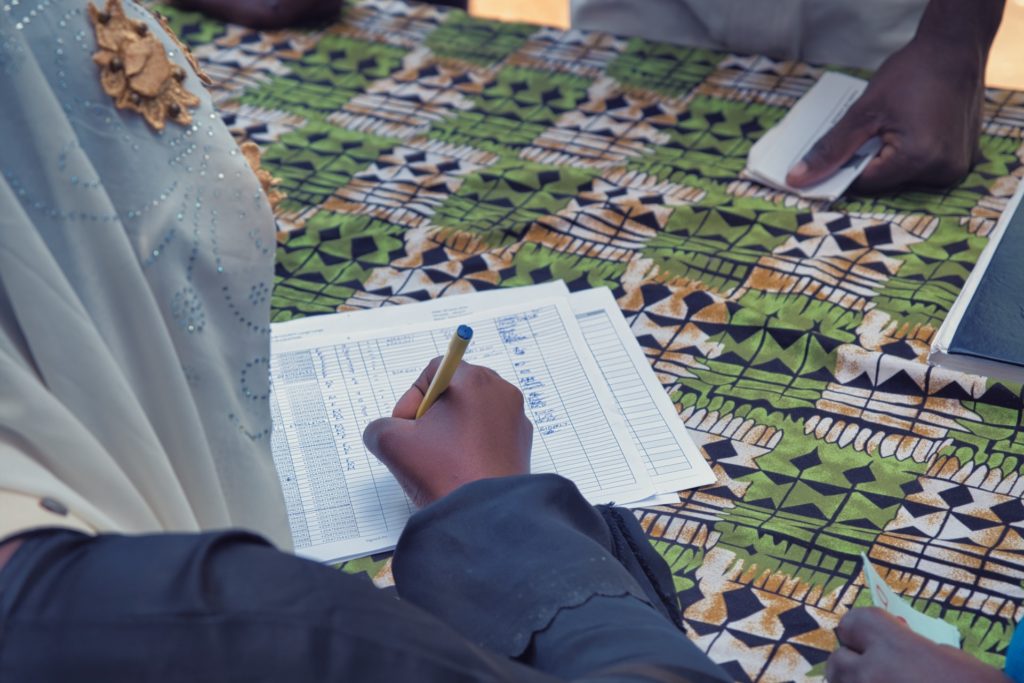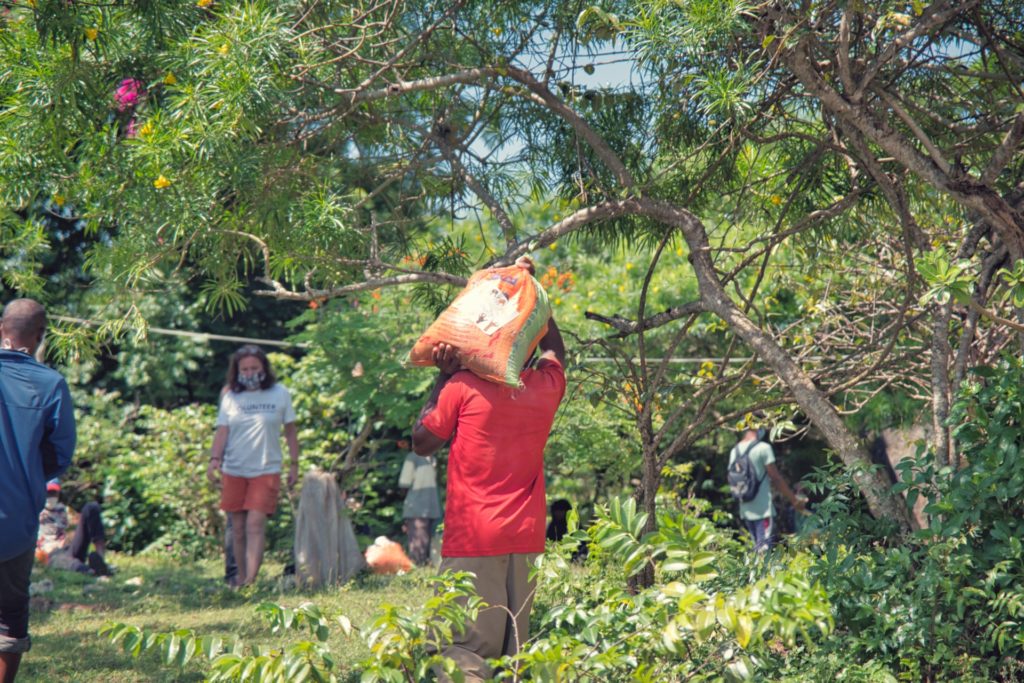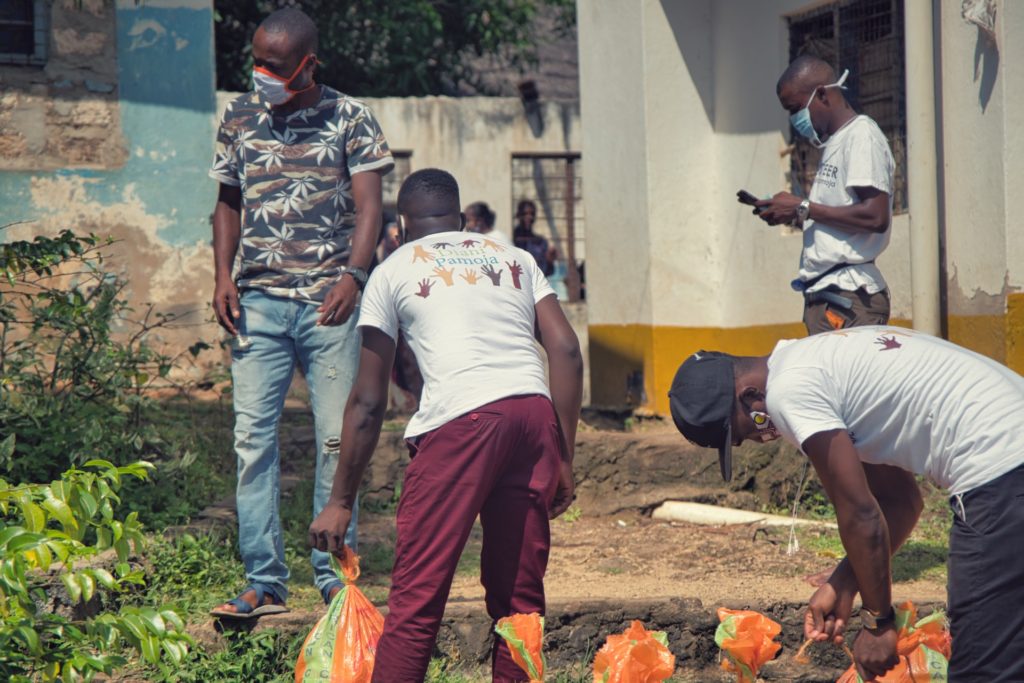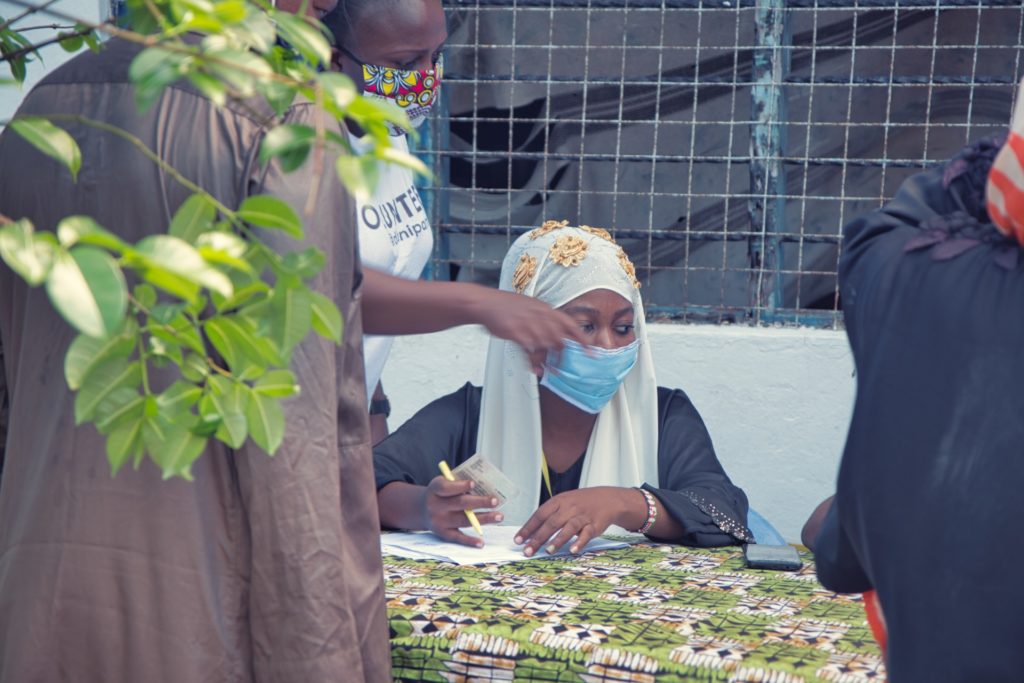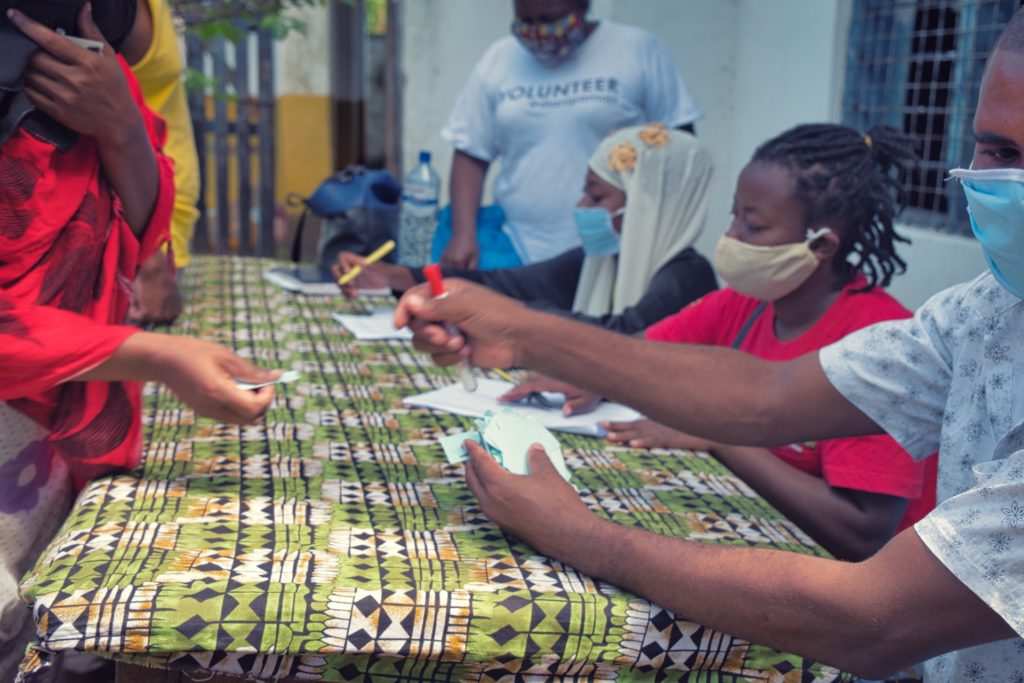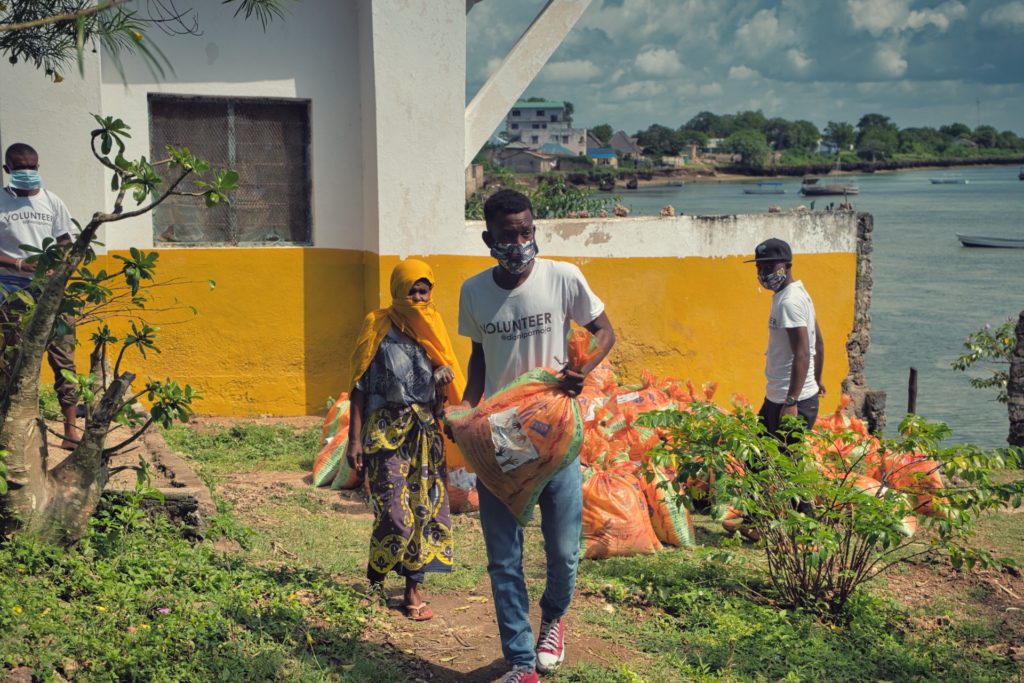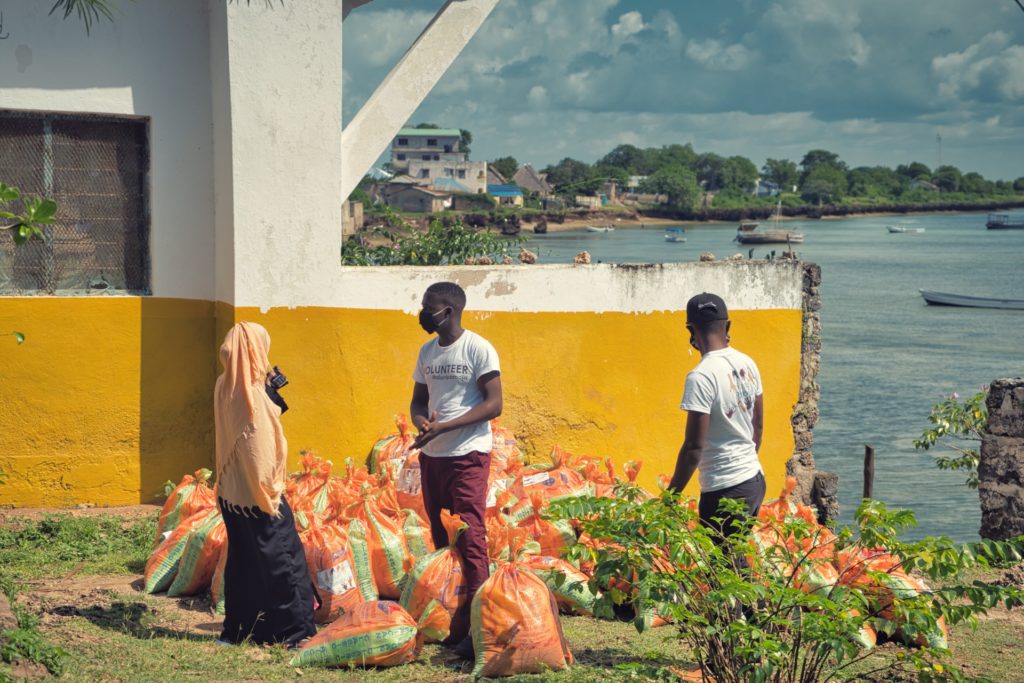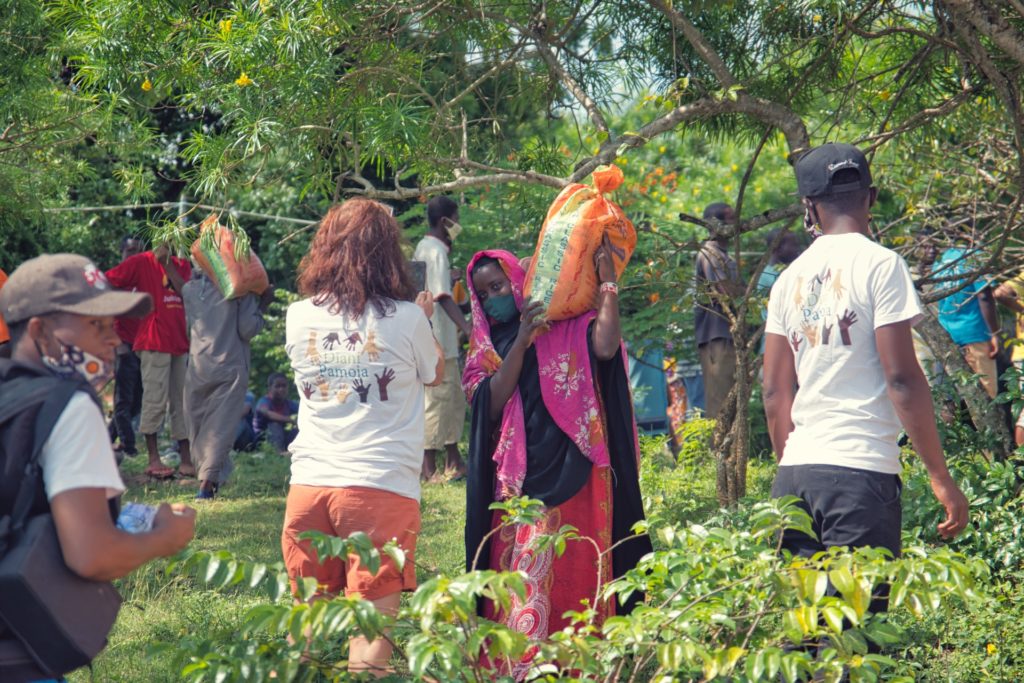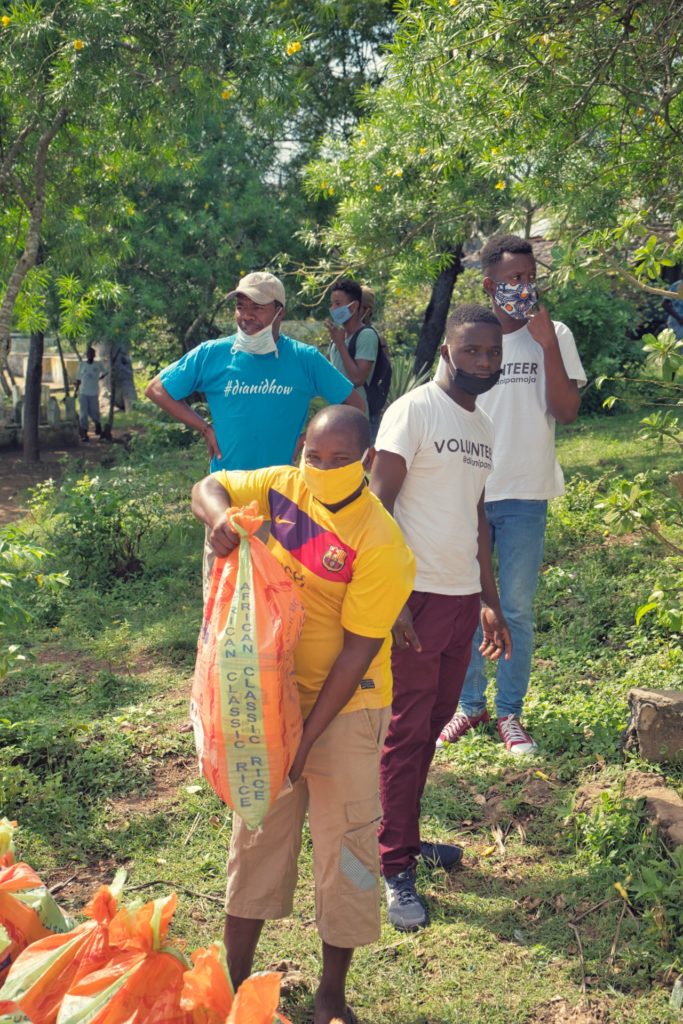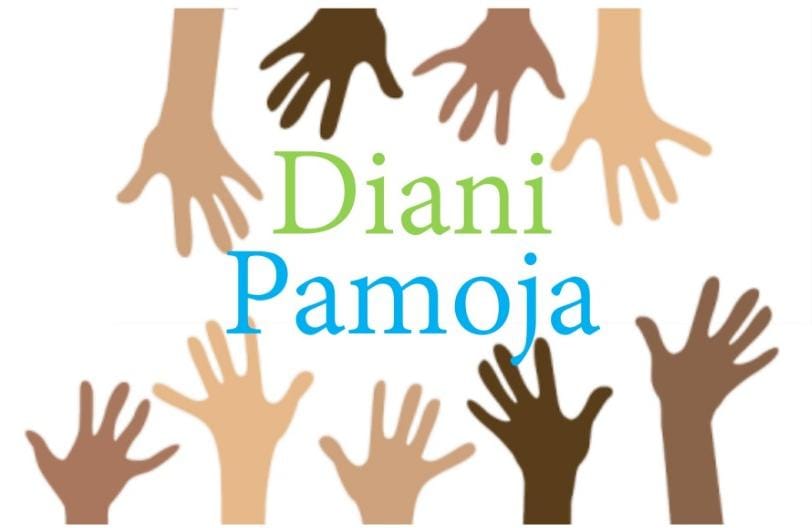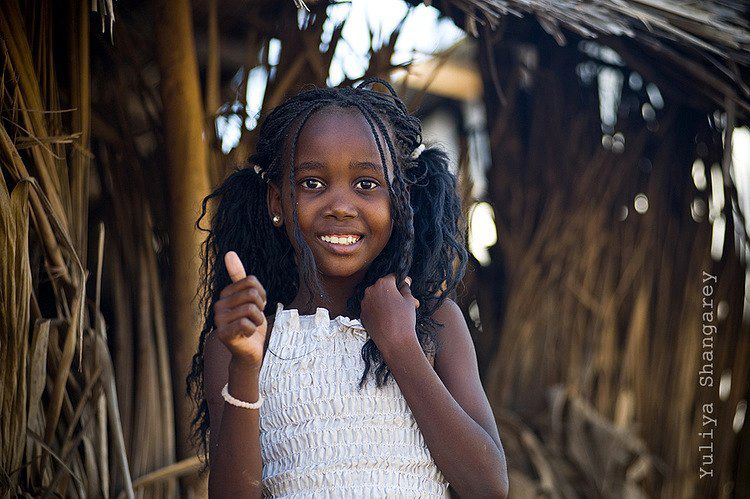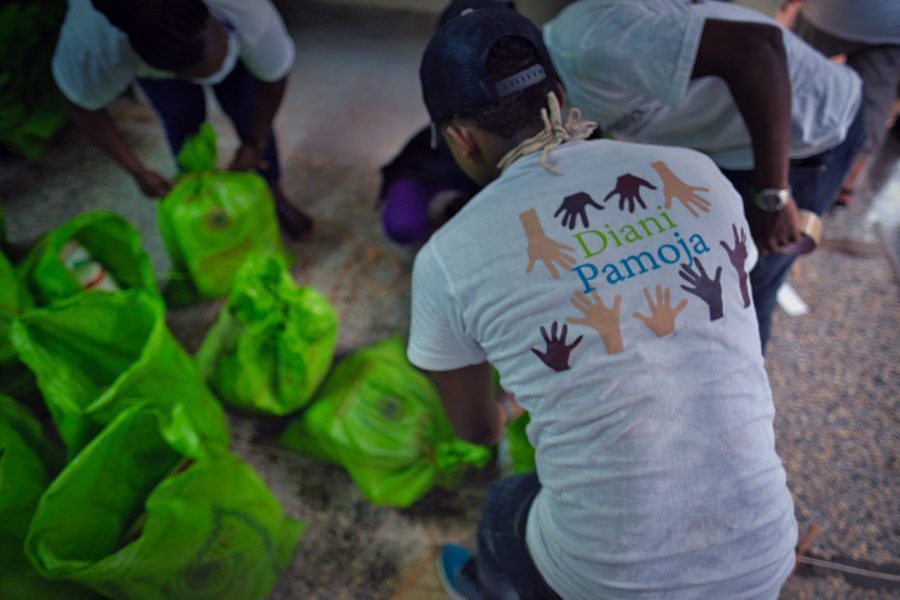Our mission today required a slightly greater logistical effort. Good advance planning was therefore essential. We are going to Shimoni to make our way to Wasini Island, a small island only about 2 km away from the mainland. Shimoni is a small harbour town with British colonial ruins and old slave caves, which can also be visited. The slave trade started there around 1750 and continued until around 1870. A little later around 1880 the British settled in Shimoni. One or the other building still stands today.
Early in the morning at 7:30 am we start our journey from Diani Beach with our volunteers. The truck from the Shree Green Grocers Mini Market will be available to us again today. Already the day before we loaded it with 160 food packages. More is not possible, because that is 3.2 tons and the road is not the best at the beginning. Steffen von Diani Dhow also lets us use his 16-seater bus. Because of Corona only half of the available seats may be used in all vehicles. On the way to Shimoni, he collects the Red Cross Kenya staff from their head office. They are also there again today to ensure that hygiene measures are observed and to register all aid recipients. Margit also takes the Landcruiser of Kiwara Safaris, so that all volunteers can come along as well. The almost 60 km long route used to be quite strenuous, as the last 14 km consisted of a clay track. Depending on the effects of the rainy season, one often couldn’t drive more than 20 km/h to avoid all the holes and hills or to cross them. But last year the road was rebuilt and now the route, which previously took at least 1 ½ hours from Diani, can be comfortably driven in about 60 minutes. This makes Wasini Island and the Kisite-Mpunguti Marine National Park even more attractive for a day trip.
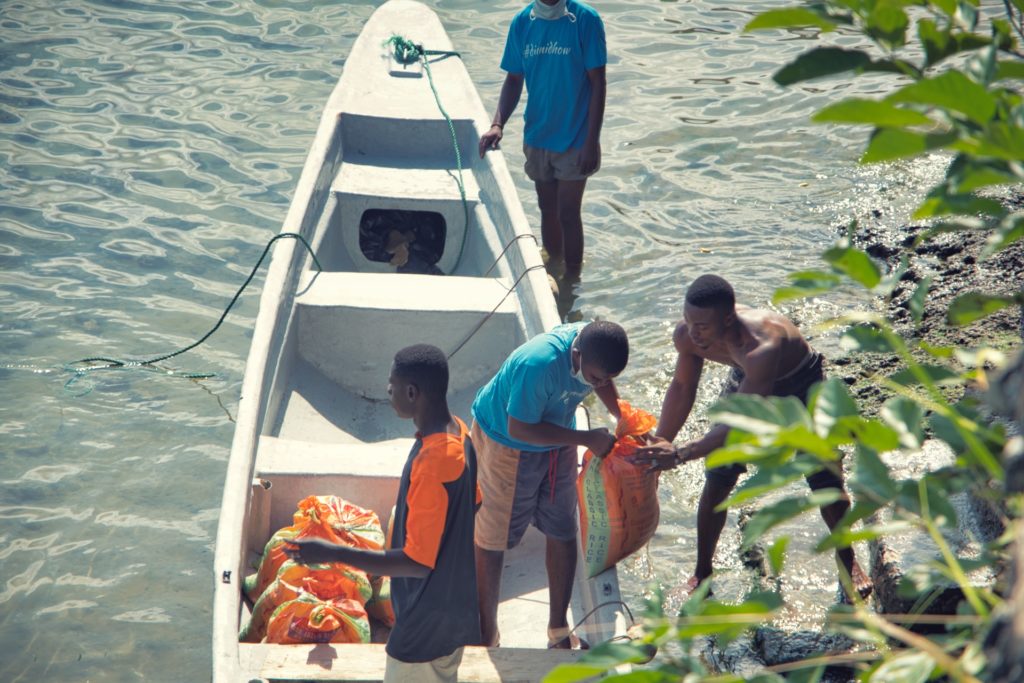
Wasini is probably known to most people as a snorkeling trip. From Diani Beach you can book tours with many tour operators. You will be picked up directly from your hotel in the morning and drive to Shimoni, the starting point for all boat tours. There you can sail with a traditional dhow, the wooden sailing boats, which have been built traditionally for hundreds of years, all the way to Kisite-Mpunguti Marine National Park. With a bit of luck, you will meet and be accompanied by groups of dolphins along the way. In the Marine National Park, you can snorkel or dive and discover the biodiversity of the Indian Ocean. Both the many different types of corals and the colourful variety of tropical fish that are at their habitat here make a trip to Kisite-Mpunguti Marine National Park unforgettable. Especially if you discover sea turtles with your nose under water. After sailing, most of the organizers take their guests to Wasini Island with the dhow. There, a few small restaurants have been established to take care of the well-being of the day guests. Specializing in fish and seafood, a good meal completes a wonderful excursion. One sits comfortably under palm leaf roofs and can let the soul dangle with a view of the sea.
Of course, this is not the case today. Nobody lets the soul dangle, because also here, for those who do not live from fishing: no tourists, no income! All the many captains, boat workers, waiters, cooks and helpers have been without work and without pay for almost 3 months now. On the approximately 5 km long island there are also no alternatives, especially as the fishermen themselves are already struggling to get a sufficient market for their daily catch. Because here too, the loss of tourism is clearly noticeable: no demand from tourists and much less demand from locals who have lost their income.
Arriving in Shimoni our volunteers have to reload 3.2 tons of food from the truck into the two dhows, which are provided inclusive the staff free of charge by Diani Dhow. We have to sail over to the island. There is no bridge, no road and no dam that can be navigated at low tide. It can only be done by boat!
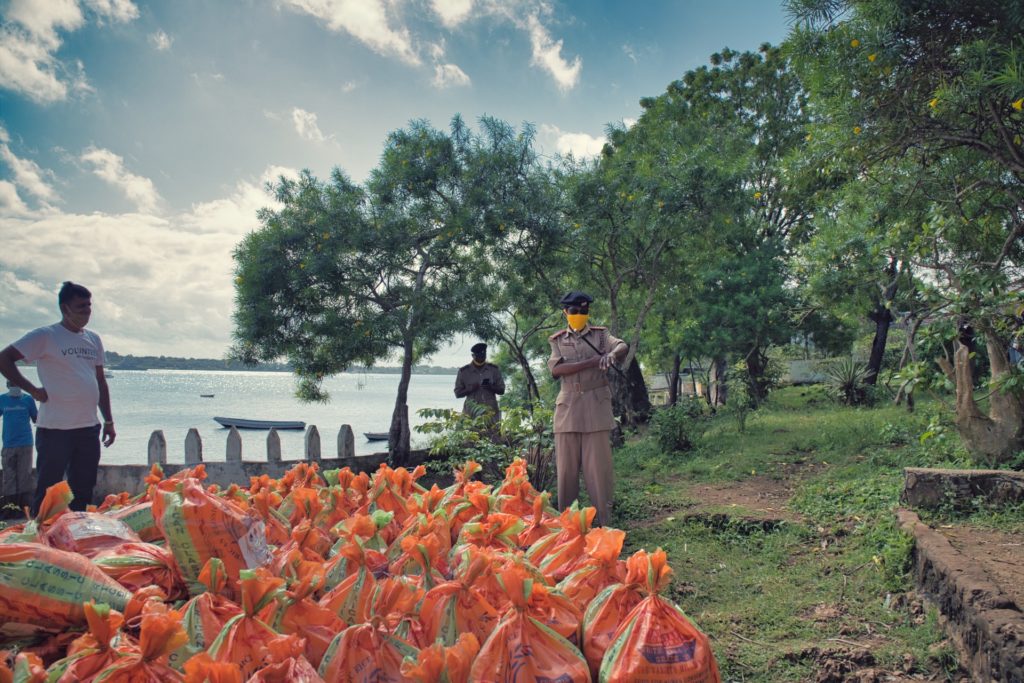
The police and the Red Cross are already crossing ahead of us, so that on the other side everything is prepared for our arrival. With both dhows we head for the other shores. Unlike when loading, there is no quay or jetty here. With a lot of muscle power, the 3.2 tons now have to be loaded down onto the dinghies. The remaining meters up to the island are then covered with the dinghies. Once again, the bags are grabbed and carried up the stairs. Wasini lies on coral stone and therefore has no flat access to land.
Due to the well-rehearsed team with our volunteers and Red Cross Kenya, the list check and the distribution of the packages to the people is unspectacular and smooth. Only the topic “social distancing” is a problem for all of us. No matter how often people are reminded by the police, the Red Cross or us: keeping distance is very difficult! But we are positively surprised that most of them already have a mask with them when they queued up to pick up their food parcel. Margit brought some of the masks that were sewn in April and a few of them could be used today as well. But most of the people are already equipped with them, which we did not expect from the more remote areas.
After handing out the 160 donation bags we are on our way back to the mainland. On the way home we stop several times to buy fruits and vegetables from the people along the road. It is considerably cheaper than in Diani Beach and our helpers are happy that they can save a few shillings. They all work with us on a voluntary basis, although some have now lost their jobs.

